News Based on facts, either observed and verified directly by the reporter, or reported and verified from knowledgeable sources.
Reconnection and reconciliation, seeking a way back
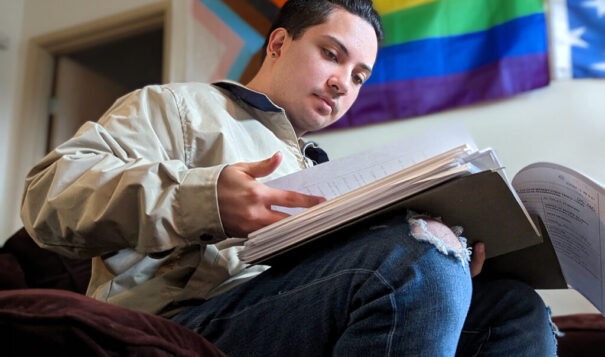 Andres “Dre” Thornock, 23, thumbs through their child welfare case file. Thornock is believed to be the first former foster youth who petitioned the Tulalip Tribes for such records. (Nancy Marie Spears, The Imprint)
Andres “Dre” Thornock, 23, thumbs through their child welfare case file. Thornock is believed to be the first former foster youth who petitioned the Tulalip Tribes for such records. (Nancy Marie Spears, The Imprint)
This article is the second in a three-part series exploring a young person’s journey through a tribal foster care system and into a life of advocacy — as well as the challenges a family and the Tulalip Tribes confronted. Read part one here.
This story is being co-published with The Imprint, a national nonprofit news outlet covering child welfare and youth justice.
Pine trees, evergreens and dogwoods blanket the foothills of the snow-capped Cascade Mountain range on the Tulalip Tribes’ ancestral land. Tall grasses and brush peek out from patches in lush forest. On a typical day skies are gray, with steady rain pattering over a mossy cover. The hum of grumbling thunder mixes with the swoosh of brisk winds.
Waterways provide the lifestream. Waves crash in steady rhythm onto the rocky shore of the Tulalip Marina — a long, thin dock jutting from the mainland like a toothpick. Screeching seagulls sky-dance overhead and ducks chatter as they glide in perfect “V” shapes across churning waters.
Andres “Dre” Thornock, 23, grew up here.
But in 2004, at age 3, Thornock entered the Tulalip Tribes’ foster care system. They were placed briefly with relatives, who reported to the court that they could not care for an additional child, and ended up moving through seven Washington foster homes. By the time they reached kindergarten age, tribal homelands became a distant memory.
“I was growing up far from the reservation,” Thornock said in a series of interviews this past year, “but still close enough to know when I was passing it or shopping nearby.”
This Imprint series, Born of History, was reported over the past year. It includes a four-day trip in March to the Tulalip reservation, and dozens of in-depth conversations with Thornock by phone and videoconference. It also includes a review of thousands of pages of court files and interviews with multiple members of Tulalip Tribes, Thornock’s kin, attorneys, tribal officials, judges, social workers and academics. As a Two-Spirit Indigenous person, Thornock is both masculine and feminine, and is identified throughout this series by gender-neutral pronouns.
Life off the reservation
Tribal leaders declined to comment on Thornock’s case, citing confidentiality which is core to their responsibility to Indigenous peoples. But they offered some general responses to questions asked for this series.
The tribes’ child welfare program is called Beda?chelh, a Lushootseed word that means “our children.” It is pronounced “buh-DAH-chuh” and is also spelled bədaʔčəɬ, using the phonetic symbol “ʔ.”
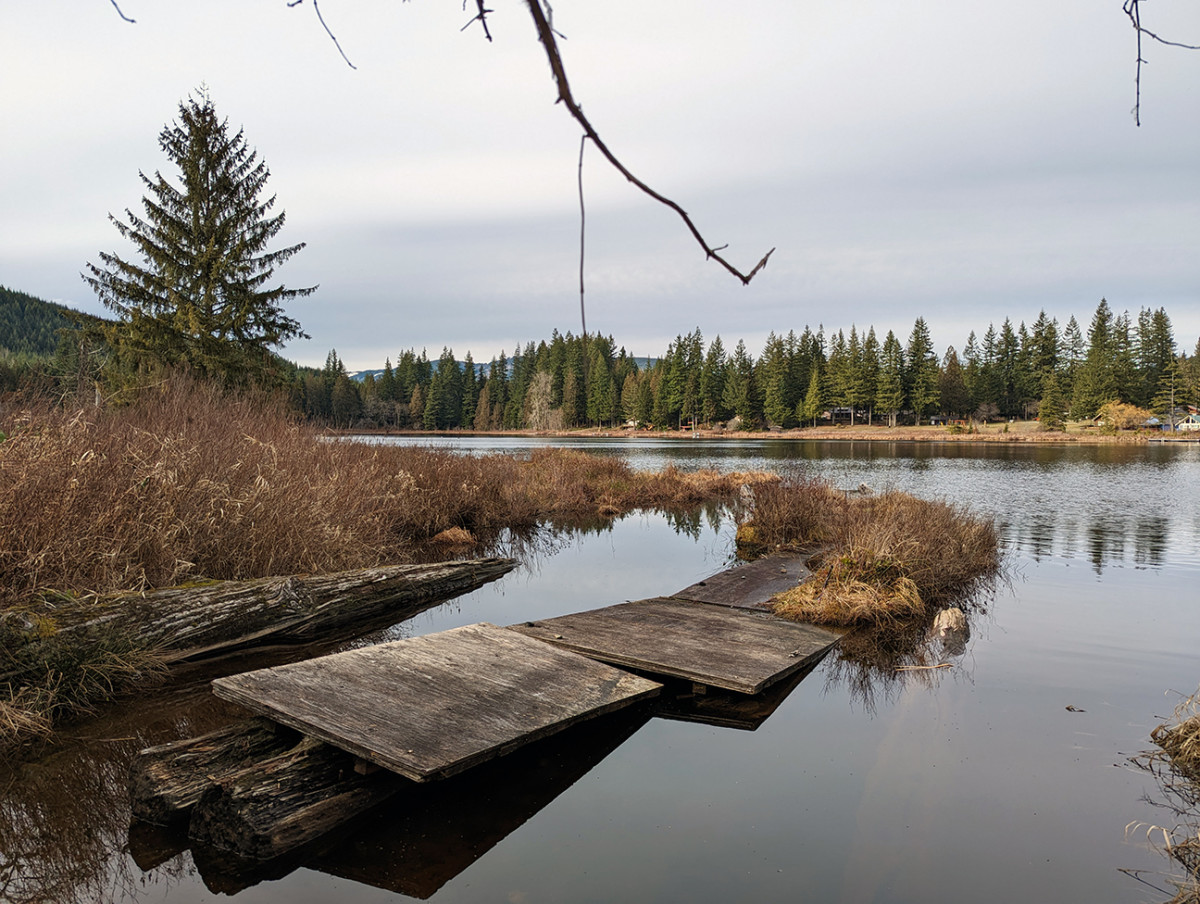
The beda?chelh codes have been “amended and adapted over time, specifically focusing on serving the Tulalip community and families,” Tulalip Chair Teri Gobin said in a statement to The Imprint. “We are constantly evaluating the Code and policies to make sure our laws and priorities are actively reflecting the best interests of the Tulalip community, and more importantly, Tulalip children.”
The tribe’s child welfare code follows its “best interest” standard for children, which includes “a preference to place with families of the child or those that would qualify as having a familial type relationship first, then Tulalip tribal members, and then other Natives,” Gobin stated. “We also seek out on-reservation placement whenever possible.”
Gobin added that the tribe is “particularly focused on keeping families together and preventing removal,” which means providing services to help treat things like addiction, domestic abuse or mental illness that can jeopardize children’s safety.
Thornock’s case illustrates how difficult this standard has been to ensure.
When matters such as placement changes and the need for a permanent plan were being discussed in the early years of Thornock’s case, tribal court documents note that “there have been no family or Tulalip Community Members that were able to provide care.”
According to federal and state laws as well as Tulalip tribal codes, in foster care cases involving tribal children, “active efforts” must be made to offer parents’ services necessary to reunify, and to ensure the children remain with kin or other Indigenous caregivers. Cases involving non-Native children require a lower “reasonable efforts” legal standard for agencies tasked with family reunification.
There is no mention in Thornock’s files of the phrase “active efforts.” In the early years of Thornock’s case, officials repeatedly noted only their “reasonable efforts” to unify the family. Those efforts included family visits, service referrals, transportation to shelters and assistance in hearings.
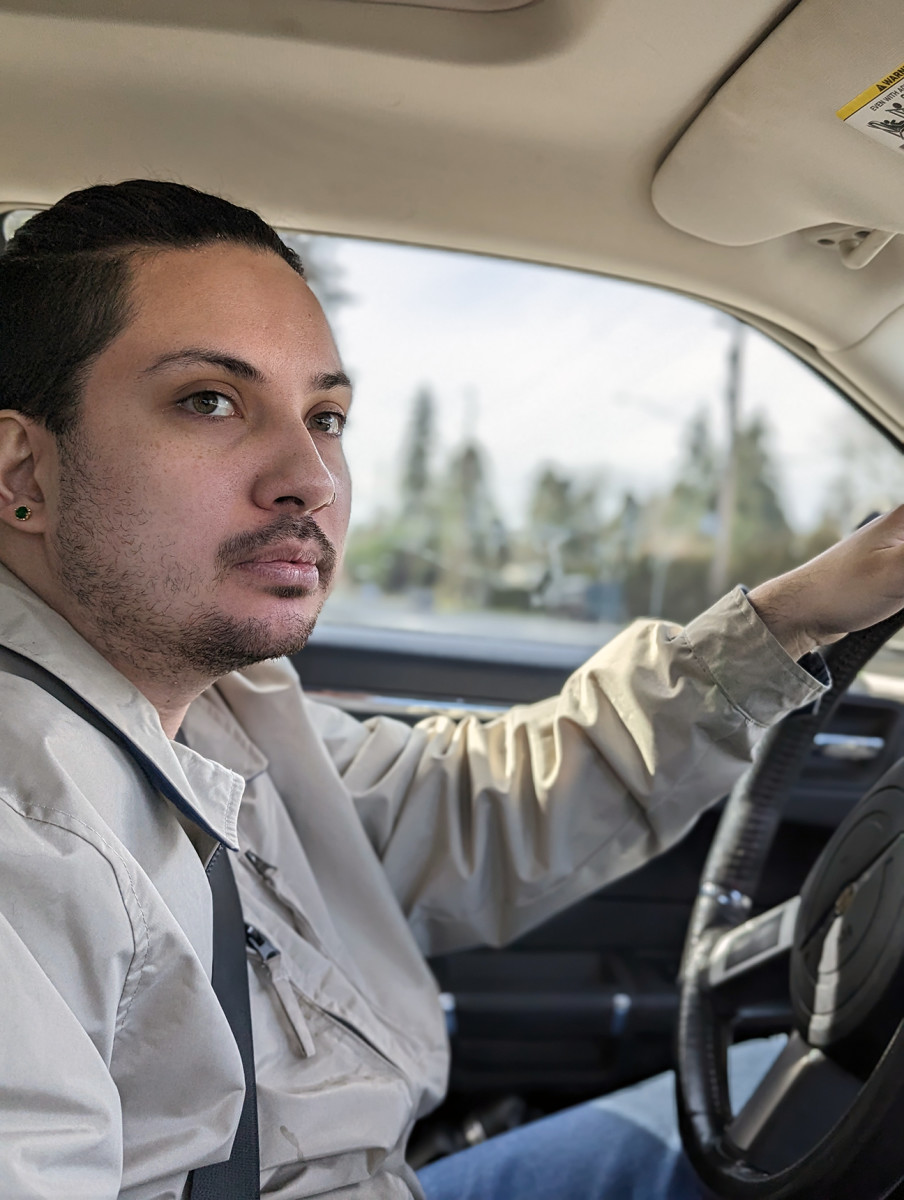
In interviews this year, a grandfather who took Thornock in during their toddler years said he and his wife were unable to offer a more permanent home. One aunt was willing to take Thornock and the other siblings into her care, but she said the tribe moved the children to another placement with no explanation.
At age 5, the tribe’s child welfare program, beda?chelh, found a home that finally seemed to stick. Thornock moved in with a white, Christian family living in a trailer home in the forested suburb of Arlington.
The Imprint is not naming Thornock’s former foster parents-turned-guardians, who are protected parties in the child welfare system, and they ultimately declined to speak on the record, after two phone interviews.
There were early signs of discomfort. Thornock said the foster parents quickly gave them the nickname, “Little Chief,” which later became “Big Chief.”
“As a kid, you know that’s not right, but you don’t understand why,” Thornock said. “You just understand there’s some sort of negative implication.”
But over time, Thornock settled into family life in Arlington. The household initially included the two foster parents, their two biological sons, Thornock, and another foster child. Thornock developed a particularly close relationship with their foster mother. Together, they organized weekly children’s Bible lessons and discovered a favorite shared snack — graham crackers dunked in apple juice.
“I absolutely loved her and she absolutely loved me,” Thornock said of that period.
Three years into Thornock’s stay, the foster parents signed a legal guardianship agreement, finalized by the Tulalip Tribal Court. The court ordered that the “guardians shall continue to bring the Youth to sibling visitation and two cultural events per year. Weekly cultural nights are recommended.”
Thornock lived just 20 miles from Tulalip lands. But in their dozen years with the Arlington family, they said they can recall only one visit back to Tulalip, to attend an event organized by the tribe.
“I had such a longing to be on the reservation that I spent my entire 8th grade research project learning about my tribe and our culture,” Thornock said.

***
According to Snohomish County court records in Thornock’s beda?chelh case file, early on, the case qualified under the federal Indian Child Welfare Act. The 1978 ICWA law, recently upheld by the U.S. Supreme Court, aims to protect Indigenous families from separation through foster care and adoption and to maintain children’s cultural ties. Washington has its own version of the federal law, further strengthening ICWA provisions.
On Tulalip land, Washington state Child Protective Services investigates maltreatment allegations alongside beda?chelh workers. If the case proceeds, the tribes take jurisdiction, managing everything from foster care placements to court-ordered services for parents and help for older foster youth through age 21.
A 2016 Memorandum Of Agreement between Tulalip Tribes and the state of Washington, outlines its first formal “government-to-government child welfare agreement.” Washington has similar arrangements with 13 other tribes. In Thornock’s case, as early as 2005 the Tulalip Tribal Court made clear it had jurisdiction. Records show the tribal court and beda?chelh officials made decisions including removals from the parents to approving foster care placements, guardians and family visits.
Beda?chelh tracks certain statistics on those it serves, but the data is not made public and it is not included in the federal database of child welfare information housed in the Adoption and Foster Care Analysis and Reporting System. Limited numbers are available in the tribes’ most recent publicly available annual report, which shows that in 2021, there were 135 Tulalip children and young adults in foster care.
Siblings briefly reunited
Despite years of scouring records and reconnecting with family, Thornock still doesn’t know the specifics of why the tribe didn’t place them with relatives or other tribal citizens. After being scattered in different foster homes, Thornock’s siblings were also separated from each other.
But that changed when the tribe arranged a visit at Tulalip’s annual Culture Night between Thornock, then a middle-schooler, and Brandon Cotton, their older teenage brother. Cotton still has the photographs of the two siblings paddling together through the trembling waters of Tulalip Bay, playing stickball and singing powwow songs.
“It was everything I ever fantasized about,” Cotton recalled. “But it just happened once.”
And there was a new development: In 2010, beda?chelh workers placed Cotton in the same foster home. At long last, the siblings were reunited.
That very special time lasted about two years. Thornock’s brother described these as his warmest experiences in foster care. He saw a transformation in his sibling as well.
“When I finally got to move in, that whole little-brother-big-brother chemistry was going on,” Cotton said. “Their guard dropped. They were already used to this family — so for their actual family to come and make it bigger — and in their eyes completed — was so awesome.”
That comfort would soon end, a pattern often repeated during a childhood spent in foster care. When he graduated from high school, Cotton moved away, and into a home of his own.
‘An uphill struggle’
Indigenous child welfare experts across the country consulted for this series described unparalleled obstacles tribes face when managing foster care. Many tribal systems, like Tulalip Tribes’, are inadequately funded by state and federal governments. The requirements for funding do not reflect tribal values — “which are mostly based on interlocking responsibilities and mentoring,” said Yurok Tribal Court Judge Abby Abinanti. She is a 15-year bench officer in tribal courts, and a 17-year plus veteran of the San Francisco Family Court Division, where she served as a commissioner, assigned primarily to dependency and delinquency cases.
“Tribes have to engage with daunting regulations to qualify for monies from federal and state programs to support their services,” she said in an email. Disproportionately high numbers of Indigenous children end up in foster care because of “the systemic embracing of the negative byproducts of colonialism” — land theft, enslavement through indentured servitude and boarding schools.
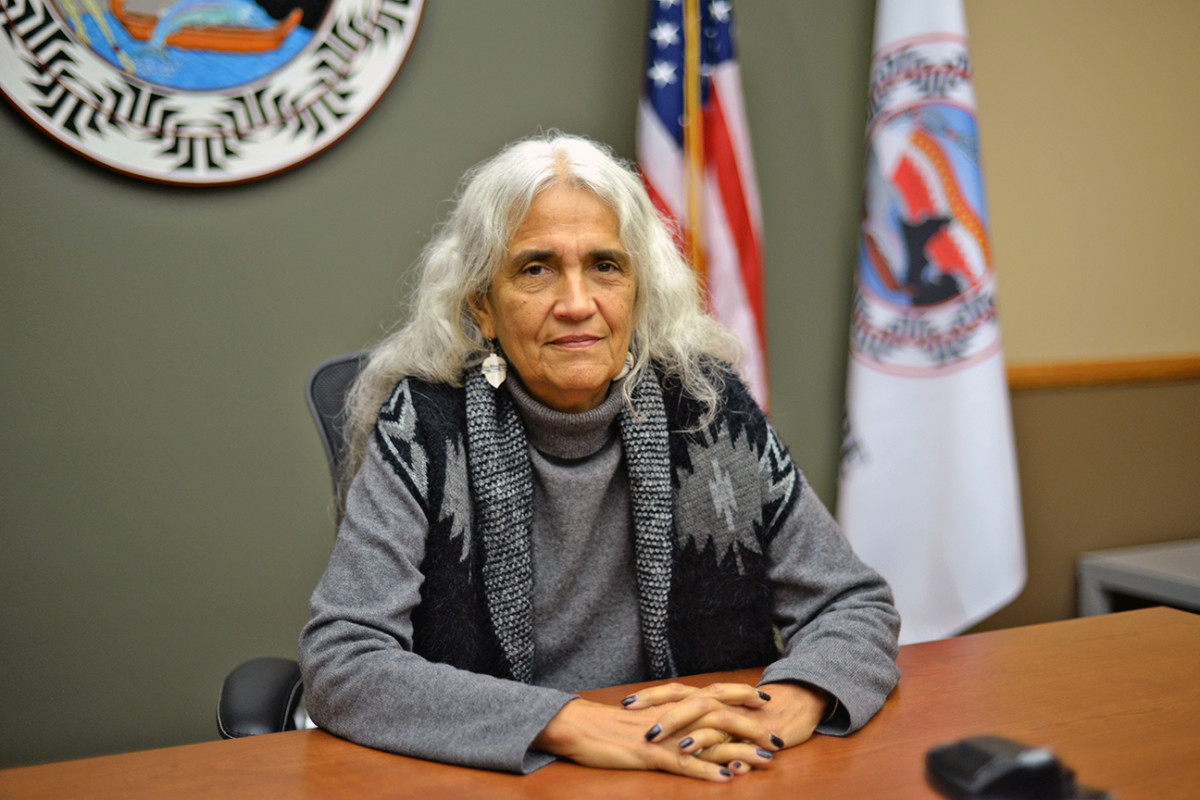
Can Indigenous people run better child welfare services than what state and county governments offer?
“Yes we can, and we are doing it better — child by child,” Judge Abinanti said. “Do we have unmet needs? Yes. But it is an uphill struggle, one the Tribes are committed to. And yes, we continue to support kin care as the best solution.”
In general, tribes are also improving efforts to keep siblings in foster care better connected — to each other and to their cultures, said retired tribal and state court Judge William Thorne, who has served on the bench for over 34 years in 12 states.
“Almost everyone today at least says they value keeping siblings together — but the reality doesn’t meet the promises when stranger foster homes are overutilized and kin are under supported,” Thorne said. “In my experience, siblings are more likely to be separated in county programs than in tribal programs.”
When tribes take over ICWA cases, there are also money concerns.
Just 14 of 574 federally recognized tribes in the U.S. receive funding from the Title IV-E Social Security Act — the largest source of revenue for state and tribal child welfare services, according to the Administration for Children and Families. An additional 150 tribes have access to another more limited pot of federal funds through Title IV-B.
In Thornock’s home state of Washington, only one of the state’s 29 tribes, the Port Gamble S’Klallam Tribe, receives Title IV-E funds directly. Others, like Tulalip, are dependent on state and tribal agreements for pass-through funding from the feds. Not all states make sure that happens effectively, said University of Washington Associate Professor of Social Work Angelique Day.
Tribes like Tulalip receive little money to hire dedicated staff who can work with reasonable caseloads. “How do you expect your child welfare system to be successful?” Day asked. “The federal funding formulas really set tribal child welfare systems up for failure.”
She added that better-funded systems can outperform state systems on key outcomes including the percentage of kids placed with kin.
Day also debunked certain misconceptions surrounding tribes’ capacity to offer child welfare services. These assumptions are myriad: that all tribes have their own independent child welfare departments — the majority don’t — and that all tribally-licensed foster homes are Indigenous homes, when many aren’t, she said.
“Many tribes have no choice but to license people outside of their citizenship, because many tribes don’t have citizens that are stepping up to do this work,” Day said. “And they have to get it done somehow.”
Teen coming out
For Thornock, things changed at the beginning of freshman year at Arlington High School in 2014. Thornock was 14 at the time, and brave enough to come out as gay to a trusted family member. When their guardians found out, Thornock said at first they seemed OK about it, although they made it clear they believed LGBTQ+ people are on the road to a “sinful” life.
The issue was tabled for a year, Thornock said, until a conversation erupted into a “blowout fight” over whether a person could be both gay and Christian. The guardians said no, that was impossible. “Suddenly, that was where the line was drawn.” Thornock said.
“A big part of feeling loved is knowing you’re being accepted into a family for who you are. I felt so unsafe. I didn’t feel like I belonged, I felt like I wasn’t wanted anymore.”
In May 2018 — just months before Thornock would legally become an adult — the foster parents relinquished their guardianship. Court records include the couples’ reasoning that Thornock “didn’t feel safe,” and was “taking these steps to remove himself” from their home.
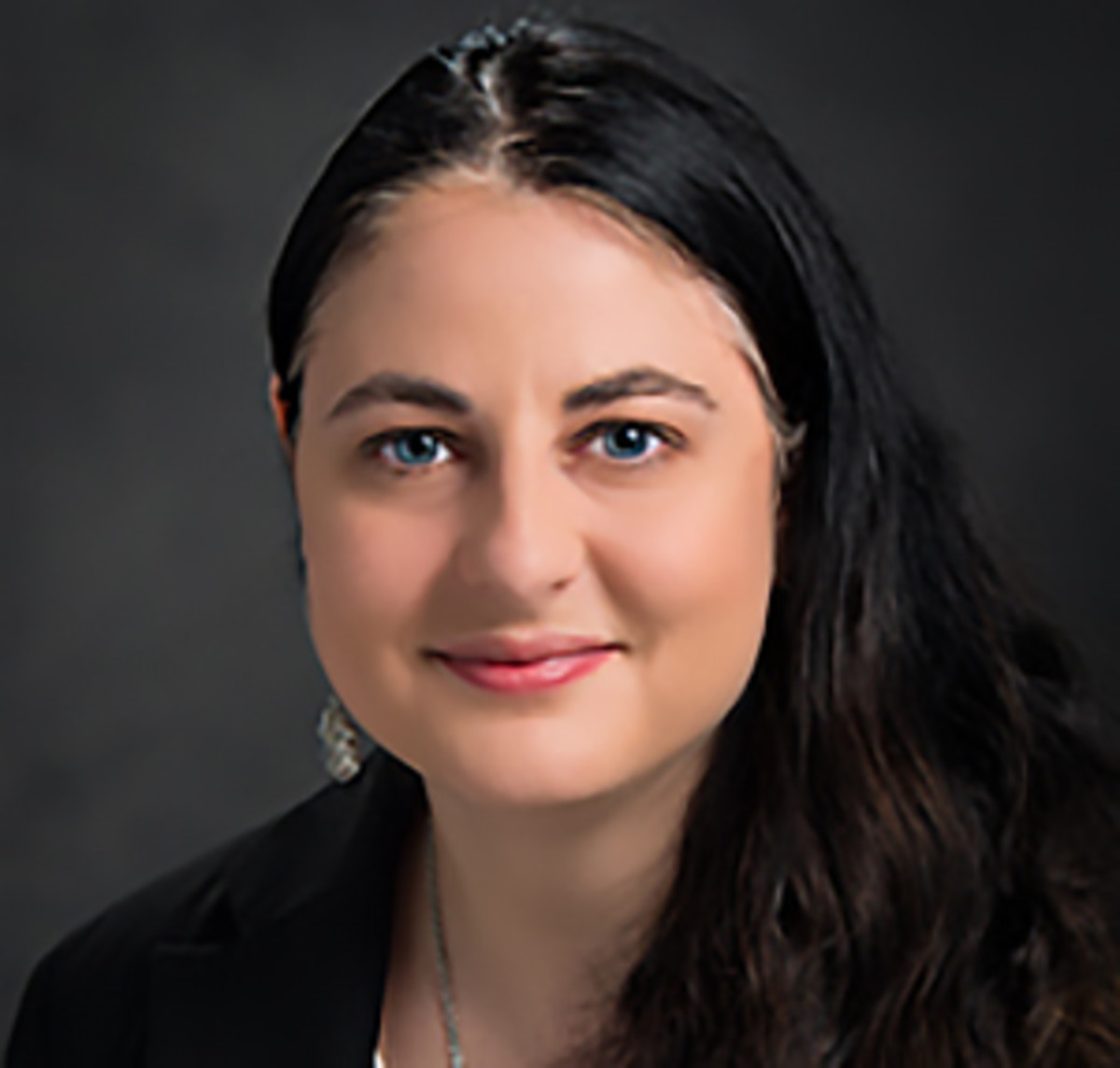
Next, Thornock stayed in group homes for about a month, then moved in with an older sister, while saving up for their own place to live.
Extended care
After leaving the guardianship home, beda?chelh connected Thornock with extended foster care benefits, which provide housing and financial support for youth ages 18 through 21. There were other new sources of support. For a time, Thornock lived with a family friend in a Tlingit and Haida home. It was there that Thornock first heard the term “Two Spirit.” And it felt right.
As a child, they’d never abided by gender norms. Thornock grew up choreographing hip-hop and Zumba dance routines, obsessing over Justin Bieber and wearing booty shorts. They loved to sport gender-fluid clothing — long acrylic nails and bold makeup with eyeliner one day, and button-up shirts and jeans the next.
“It’s so much more than just a gender identity,” Thornock said, referring to the broad definition of Two-Spirit people, who were revered in communities across Turtle Island — what is now the United States. They described the special ceremony in which adolescents would pick a basket or a bow, providing guidance on whether feminine or masculine roles would unfold in their lives.
Thornock says that for Two Spirit people, sometimes “The Creator picks one, and sometimes he says, no, you’re going to take on both responsibilities of those roles. Two Spirit people are leaders, considered deeply spiritual beings within our tribes because of that backstory of being so much closer to nature as both man and woman.”
Reclaiming family
Thornock’s final period in Tulalip’s foster care system involved reconnecting with relatives as a young adult. They were particularly eager to spend time with an aunt, an aunt, Kim Kealani Seven Renee Moser, who had cared for Thornock and their siblings shortly after they were removed from their parents in 2004.
The two now take cooking classes together and share weekly dinners. A favorite is Hawaiian pulled pork sandwiches. Moser, a tattoo artist, is helping her nephew with some particularly meaningful images: a back piece depicting male and female eagles facing each other that form the face of an owl, a bird that represents their family crest.
Thornock’s biological mother did not want to be interviewed for this series, and The Imprint is not naming her to protect her privacy. But relatives say she has been sober for two years now, the longest stretch so far. Some of her children have reconnected with their mother — and with each other. Thornock’s brother, Cotton, is a self-proclaimed “mama’s boy” who said he will always love and accept his mother “no matter the pain she caused me.” Others, including Thornock, are still working toward reconciliation.
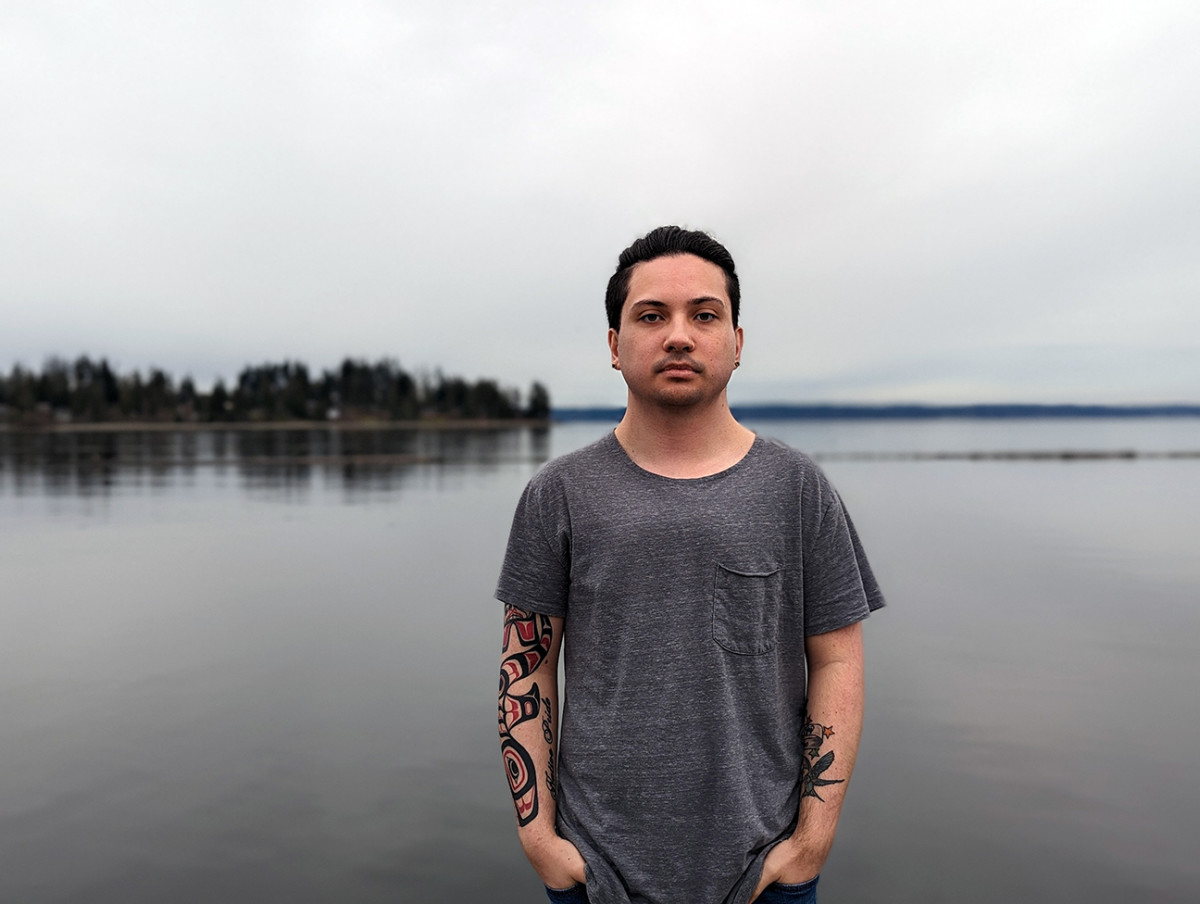
“We are a product of having been taken away from our families,” Thornock said. “We’re still dealing with the trauma. We probably always will deal with that — even as adults.”
But Thornock has found a way to address these wounds: speaking up and pushing for change.

Coming soon, Andres “Dre” Thornock embarks on a personal and political path that leads them back to the Tulalip reservation.
Nancy Marie Spears is an enrolled member of the Cherokee Nation of Oklahoma and the Indigenous children and families reporter for The Imprint. She has won awards from the Native American Journalists Association and her stories are co-published with Indigenous news outlets across the country. She wrote and photographed for this Born of History series. Her email is nspears@imprintnews.org.
